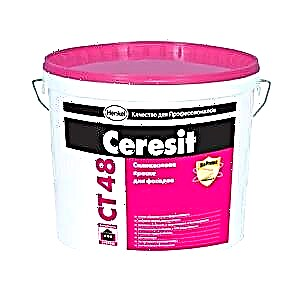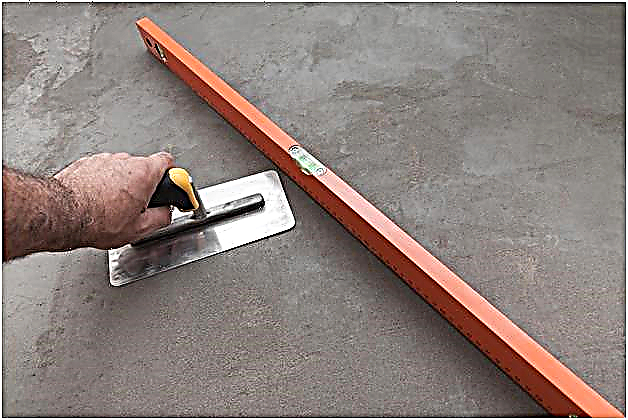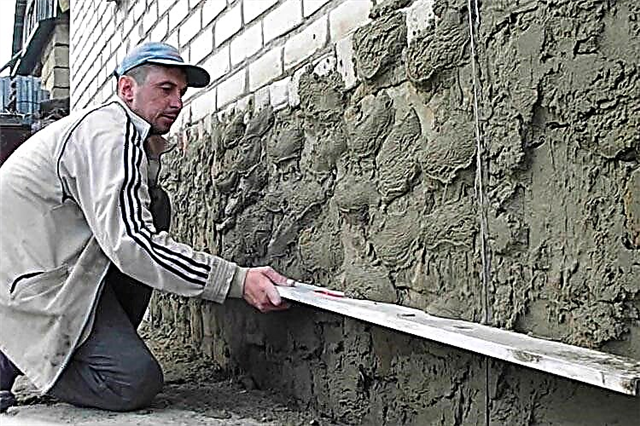As a film-forming substance in production organosilicon enamels branched polyorganosiloxanes are used, characterized by high heat resistance for a long time (from 200 to 500 - 700 ° C). The organosilicon lacquers produced are solutions of polymethylphenylsiloxanes in xylene, toluene or other solvents with a content of non-volatile substances from 20 to 70% (mass). The introduction of pigments and fillers in organosilicon enamels enhances the heat resistance of coatings, hardness and mechanical strength.
Composition
Part organosilicon varnishes modifier, drying accelerator, solvents and silicone polymer are included. In addition to the composition of enamels and primers, pigments and fillers are introduced.
Unmodified and modified silicone varnishes (KO-08, KO-85, KO-815, KO-921, etc.) are used as film-forming substances. For modification, polyesters, polyacrylates (BMK-5, etc.), colloxylin, ethyl cellulose are used.
Drying accelerators are desiccants, salts of carboxylic acids (zinc octoates, cobalt), polyorganosilazanes. Usually they are introduced before applying the paintwork material, because during storage they can cause the formation of an insoluble product, i.e. polymer precipitation from solution.
Getting
Organosilicon enamels and primers are obtained in three stages:
- obtaining a modifier solution (ethyl cellulose, colloxylin, BMK-5 resin, etc.),
- receiving pigment paste,
- making enamel or primer, followed by their typing and cleaning through a cotton-gauze filter.
The modifier solution is obtained in a vertical mixer in a mixture of active organic solvents using heating. Pigment paste is obtained in a ball mill lined with porcelain tiles and filled with porcelain or uralit balls. The dispersion of pigments is carried out in the medium of organosilicon varnishes or modifier solutions to the required degree of dispersion.
Properties and Application
Based on organosilicon polymers produce a wide range of electrical insulating, heat-resistant and weather-resistant paints. Organosilicon coatings Along with heat resistance and high electrical insulating properties, they have weather and tropic resistance, including in humid tropical climates. They retain their appearance and shine well after prolonged exposure to high temperatures (up to 250 ° C), are resistant to oxidative degradation and the action of solar radiation.
Organosilicon enamels for a long time protect from atmospheric corrosion products and structures made of wood, concrete, ferrous and non-ferrous metals. Data on the properties of organosilicon varnishes, enamels, primers and putties are given in the table.
What is organosilicon paint
Organosilicon paint is a coloring material based on polyorganosiloxane polymers. A multi-component suspension containing various coloring pigments, in which modifying additives, silicone resins and organic solvents can be added depending on the desired performance.
There are two types of silicone paint:
- With a limited level of heat resistance. For the most part it is used for painting facades of buildings, is available in a wide palette. Limitations are associated with the heat resistance of the pigments that make up the enamel. At temperatures above +150 ˚C, the pigment structure is destroyed and the coating loses its color. The service life of this category of enamels is 10-15 years.
- Heat resistant. It is used to prevent corrosion on steel, titanium and aluminum surfaces, to protect parts of industrial equipment from prolonged temperature effects or wet environments. This category of enamel is often used for painting furnaces, chimneys, fireplaces and other heating equipment in order to avoid reducing the strength of materials susceptible to crystallization of salts.
Main characteristics
Organosilicon paints are used for exterior decoration. This category of paints and varnishes accordingly has the characteristics necessary for painting surfaces in the open air:
- UV resistant. High resistance to sunlight
- Water permeability (absorption). After the paint has completely dried, water penetration is not observed,
- Abrasion: resistance reaches more than three and a half thousand cycles,
- Drying time. Dries completely within two hours after applying the last coat,
- Heat resistance. Heat-resistant enamels withstand temperatures up to +600 ˚C.
Advantages and disadvantages
Pluses of organosilicon coatings:
- Painting work can be carried out at temperatures from + 40 to -20 ˚C,
- The coating withstands extreme temperature conditions (from -60 to +150, +600 ˚C depending on thermal stability),
- Long service life: more than 15 years,
- Excellent protection against corrosion and moisture,
- Large selection of colors,
- Good electrical insulating properties,
- Relatively low price,
- Not soluble in most solvents and chemically inert to most chemicals.
Cons of organosilicon coatings:
- Strong toxic fumes released by the composition upon drying are very harmful to humans,
- Direct contact with silicone paint for a long time affects the human mucous membranes and is harmful to health,
- Organosilicon can only be used for outdoor applications,
- Do not apply on wet surfaces: after rain, snow or hoarfrost.
Where applicable
Silicone paint facade is widely used in construction for decorative weather-resistant painting of the exterior surfaces of buildings and structures. It is also used for protective coating of brick, concrete, stone, plastered wooden and pre-primed metal elements of buildings.
The hydrophobic properties of the paint are used in the protective painting of building foundations and slate surfaces.
Silicone enamel with high heat resistance is widely used in industry for painting and protecting various heating devices, parts of electric motors, transformers and internal combustion engines. As a protection against water and metal corrosion, it is used in bridge building, shipbuilding, for painting supports and port structures.
It has found wide application in all industrial production and enterprises of the national economy, where the work of mechanisms, devices, tanks and premises in extreme temperature or atmospheric conditions is required.
Features: surface preparation, painting
Organosilicon enamel can be applied to the painted surface in several ways:
- Using a paint roller or brush. In this way, it is very difficult to control the thickness of the coating, which affects the adhesion to the surface to be painted, as well as further operational properties,
- Using a pneumatic spray gun. The lack of a large consumption of paint and varnish material and a considerable amount of toxic fumes in the air from the solvents included in the paint,
- The part to be painted is completely immersed in the dye. Subject to certain dimensions of the part and the presence of a suitable volume tank.
So that the thickness of the enamel layer during painting does not exceed the recommended 30 - 50 microns, most often it is applied without any primer, but in 2 to 3 layers with a difference of about 15 minutes. In some cases, for painting metal surfaces, preliminary cleaning, degreasing with solvents, and then priming in a couple of layers is necessary.
Old cracked coating is removed mechanically or chemically. Other surfaces are thoroughly cleaned from grease, dust and other contaminants before painting.
Facade organosilicon enamel dries in the open air thanks to special additives. For heat-resistant enamel, there are industrial dryers that blow the painted surface at high temperature.
Surface painting with organosilicon paints must be done with the observance of safety regulations. With all the wonderful, useful properties of organosilicon, these enamels remain very toxic, so special protection is needed to work with them.
A brief description of

Organosilicon materials represent a wide variety of liquids, resins and all kinds of rubbers. Their composition is characterized by a high content of interacting oxygen and silicon. Together they form very strong and stable compounds. A suspension with many components contains coloring pigments. Depending on the required operational characteristics, they add:
- silicone resins
- modifying additives
- organic solvents.
Organosilicon paints are divided into two types: with a limited degree of heat resistance and heat-resistant.
The first option is used for painting the facade of buildings. Such paint is available in different colors and shades. The limiting level of heat resistance is affected by the pigments included in the composition. They do not withstand temperatures above +150 o C. Their structure is destroyed and as a result, the coating loses its color. The life of this type of product is 10-15 years.
Heat-resistant enamel is used to prevent corrosion on titanium, steel and aluminum surfaces. It serves to protect parts of industrial equipment from a humid environment and prolonged exposure to temperature. It is often used for painting stoves, fireplaces, chimneys and other types of heating equipment. The coating does not allow reducing the strength of materials that undergo crystallization of salts.
Basic properties
 Organosilicon coatings have special properties that are unique to this coating category. They are used to paint the exterior.because they have all the characteristics for painting surfaces outdoors. Their compositions provide high quality and increased stability of painted objects.
Organosilicon coatings have special properties that are unique to this coating category. They are used to paint the exterior.because they have all the characteristics for painting surfaces outdoors. Their compositions provide high quality and increased stability of painted objects.
Paints of this type have a water-repellent effect. These paints and varnishes do not perceive temperature conditions, therefore external influences practically have no effect on them. Frost resistance and tolerance to very high temperatures make it possible to use in conditions with different climates.
Special anti-corrosion additives in the composition of coatings improve their quality. They are resistant to all weather conditions. Enamels and paints also contain acrylic resins and cellulose ethyl ether. These substances help to achieve quick drying of the painted surface.
Various pigments in the composition of modern paintwork material significantly expanded the color palette. In addition to high thermal stability, the coating retains its decorative properties for a long period of time.
Advantages and disadvantages
Organosilicon enamels have their own characteristics, as well as the pros and cons inherent only to this coating. They have the following advantages:
- moisture resistance and water tightness,
- heat resistance
 resistance to ignition and ultraviolet rays,
resistance to ignition and ultraviolet rays,- light resistance and atmospheric stability,
- quick drying after staining,
- varied color palette,
- not afraid of chemical attack,
- minimum consumption
- effective corrosion protection for metal surfaces,
- possibility of coloring at subzero temperatures.
In addition to the characteristic features and positive properties, organosilicon materials have their drawbacks. Among the minuses:
- toxic fumes are emitted during drying
- with prolonged contact, paints negatively affect the human body,
- they are intended for outdoor use only.
Paint and varnish compositions of the organosilicon group are widely used in industry. Due to their composition, they differ from other analogues. They do not require priming the work surface before painting.
Application features
Paints and enamels with organosilicon compounds can be applied in three ways:
- Using a paint roller or brush, but with this application it is difficult to control the thickness of the coating layer. It affects further performance and adhesion to the material to be coated.
- When using a pneumatic spray gun there is a large consumption of paint. During operation, a large amount of toxic fumes is released in the air due to the solvents in the paintwork.
- It is possible to immerse parts in enamel completely. However, this is possible provided that their sizes fit the volume of the container with the dye.
It is recommended to apply a coating layer with a layer of 30-50 microns. So that it does not exceed these parameters, it is possible not to apply a primer, but to paint 2-3 times with an interval of 15 minutes. Sometimes for painting metal surfaces, preliminary cleaning is necessary. After that, you need to degrease it and make a primer in 2 layers.
If the old coating is cracked, it must be cleaned mechanically or chemically. From other surfaces you can only remove grease and remove traces of dirt before painting.
Using organosilicon paints, it is always necessary to adhere to safety rules. Despite many useful properties and remarkable characteristics, such a product remains toxic. In working with it, protective means must be used.
Special properties
Paints based on organosilicon compounds have a number of positive characteristics:
- They have high thermal stability and frost resistance (tolerate temperature fluctuations up to 60 degrees).
- They have excellent water resistance.
- They perfectly tolerate the impact of an aggressive environment.
- Do not fade or change color under the influence of ultraviolet rays.
- The industry produces a large number of different colors of these varnishes and paints, which makes it possible to easily select the desired shade.
- Low paint consumption when coating surfaces makes these materials economically viable.
- They are inexpensive.
- Perfectly applied on surfaces at temperatures from –20 degrees to + 40.
- Provide metal coated with such coatings with high corrosion protection.
The disadvantage of varnish enamels based on organosilicon compounds is the high toxicity of fumes when dried. With prolonged contact with them, a person experiences a reaction as to narcotic substances.
In this regard, such materials are used exclusively for outdoor street work. If paint work is carried out indoors, a respirator must be used.
Areas of use
Most often, organosilicon paint and varnish are used during external finishing works in construction. These materials, due to their technical characteristics such as resistance to atmospheric precipitation and durability, are used to cover the surfaces of facades and street buildings.

Such paints not only create protection for the surface of buildings and structures, they are able to perfectly decorate and adorn them. These paints and varnishes adhere perfectly to surfaces:
The paint and varnish covering layer applied on the surface of chimneys, chimneys, electric furnaces, tolerates particularly high temperatures without changing color and violating the durability and integrity of the surface.
Due to the special refractory and insulating properties, varnishes and paints based on an organosilicon base are used to paint products used in everyday life for cooking and tolerate frequent heating.
For these purposes, special paints and varnishes are used, which belong to the group of food varnishes approved for coating products in contact with food products of people and animals.
In accordance with sanitary and food requirements, these materials are of two types:
- Varnishes and paints that have permission to use on any surface without restriction. Such materials are suitable for use for any purpose, including in public buildings, hospitals, kindergartens and schools.
- Paints and varnishes having restrictions and allowed for some types of work.
Paints and varnishes having permission for their unlimited use are often used to coat the inner surfaces of tin cans.
Surface preparation
Any paints and varnishes, including those made with the use of organosilicon compounds, must be applied to the painted objects, strictly observing the technology of painting work.

If it comes to coating metals, you should first clean the product from dirt, traces of oils, rust, residues of old paint. After all contaminants are removed, the cleaned metal must be degreased. Surface degreasing is done with solvents.
Cleaning surfaces for painting are carried out manually or mechanically. If necessary, some surfaces are coated with one or two coats of primer mixes, compatible with paints and varnishes, before painting.
Consumption of primers and paints depends on the area of the surface to be coated, the number of layers and the quality of the substrate to be coated. For painting concrete or brick, a larger amount of soil and paint will be needed than when applying them to metals.
After priming, it is necessary to postpone further painting work for a while to allow the soil to dry completely. Organosilicon compounds are not applied to wet surfaces covered with dew, hoarfrost, snow.
Preparation of dyes for surface application
Organosilicon enamel is sold ready to use, and you do not need to make any manipulations before using it. If it is thickened for some reason, it can be diluted to the required consistency with xylene or toluene. After the diluents are added to the main coloring composition, the resulting mixture must be thoroughly mixed.
It is not recommended to dilute varnishes and paints in order to reduce their consumption, since in this case the film formed by diluted paint will have lower strength and quality indicators, its decorativeness and water resistance will decrease.
Surface painting
Silicone-based enamels, varnishes and paints can be applied:
- airbrush
- spray gun
- manual painting with a brush or roller,
- by immersing the product in a coloring matter.
Staining can be done at ambient temperatures from –20 to +40 degrees Celsius. The only prerequisite is that the painted surface must be completely dry.
Metal surfaces are painted in two or three layers, concrete, plaster, cement and brick are coated with three layers of paint. Before applying each subsequent layer, the previous one is allowed to dry. The more porous and loose the substrate, the higher the consumption of paints and varnishes.
Such remarkable properties of organosilicon enamels and paints, their high level of heat resistance, durability and special strength, made them especially in demand in production, construction and everyday life.
Technical characteristics of organosilicon enamels
The main technical characteristic is considered to be heat resistance. They paint fireplaces, stoves, barbecues, slate. Subject to painting designs that are exposed to high temperatures.
Before applying the enamel in a jar should be mixed, shaken. Otherwise, the color cast will not be uniform.
Advantages of these enamels:
- frost resistance
- heat resistance
- moisture resistance
- not combustible
- resistant to sunlight
- wide palette
- chemical resistance
- application at subzero temperatures,
- corrosion protection.
In addition to advantages, it has disadvantages. In the process of drying harmful toxic gases will be released. Negatively affects the body during prolonged painting.
KO-811
KO-811 paint is intended for painting structures made of metal and titanium, which are subjected to a temperature regime of up to +400 degrees C. The composition includes a suspension of a solution based on KO-8 silicone varnish and resin. Apply paint with a roller, brush. It is also possible by spraying. Drying time depends on the degree. Up to grade 5, the coating dries in two hours at a temperature of +200 degrees C.
Before application, the manufacturer recommends thoroughly mixing the enamel. Pigments settle on the bottom. For uniform color, the suspension should be well mixed. If the paint has thickened, it can be diluted to the desired consistency with thinner P-4. Observe safety precautions when working. Keep container away from open flames.

KO-813
This enamel can be put in the ranking a number higher. It is heat resistant. The formed coating after drying withstands temperatures up to + 500 ° C. Designed for painting products, metal structures in rooms with high humidity.
Paint and varnish material is made in the form of aluminum powder and varnish KO-815. The components are mixed in a ratio of 94: 6 before use. The drying temperature to 3 degrees should be +150 C. The time of complete drying at a temperature of +20 C is 72 hours. The surface film should be smooth and uniform. The color is silver. The surface must not be primed in advance. After dilution, the enamel is suitable for 8 hours. It is combined with solvents - toluene. solvent P5. Products are manufactured in accordance with GOST 11066-74.
Organosilicon enamel KO-88 has a high weather, moisture, and gas resistance. The coating formed by enamel has hardness, strength and elasticity.
Enamel is heat-resistant. The formed coating after drying withstands temperatures up to + 500 ° C. Designed for painting products, metal structures in rooms with high humidity.
Paint and varnish material is made in the form of aluminum powder and varnish KO-05. The components are mixed in a proportion of 100: 21 before use (100 parts of varnish and 21 parts of powder). It is applied in two layers. Application methods are airless or pneumatic. Drying temperature between layers at a temperature of +20 C - 30 minutes. The time of complete drying is 120 minutes (2 hours) at +150 С. The surface film should be smooth and uniform. The color is silver. The surface must not be primed in advance. After dilution, the enamel is suitable for 8 hours. It is combined with solvents - xylene, solvent. Products are manufactured in accordance with GOST 23101-78.
KO-8101
Paint and varnish material protecting a metal surface from corrosion. The paint does not require a preliminary primer. It is operated at temperatures from - 60 C to +600 C. A rich color spectrum: black, blue, gray, green, red, yellow, beige, red-brown. Protects from destruction under aggressive environmental influences: fog, gasoline, mineral oil.
Appearance after complete drying a uniform protective film. It is made according to the standards specified in TU 2312-237-05763441-98. It is recommended to apply in 2-3 layers. Compatible solvents are xylene and toluene. The time period for complete drying is 72 hours.
KO-8104
Organosilicon paint is inherent to protect the structure from aggressive environments at +600 C. The scope is very wide. Actively used in enterprises of the engineering industry. Provides a rich color palette. Red, yellow, black, blue, green, red brown, blue, silver, gray.
Thinner - solvent 646, solvent or xylene.
Application at low temperatures is allowed. The surface to be painted is not previously required to be primed. However, clean from dirt, degrease is necessary. Shelf life 1 year (12 months). It is stored at minus and plus temperatures. It finally dries in 72 hours.
KO-870
KO 870 is used for painting concrete, reinforced concrete, brick surfaces. The protective film is resistant to the effects of mineral oils, salt solutions. Mix well before starting work. Stir until the precipitate disappears. Color should be uniform. Start using after stirring.
The drying time between layers is from 30 minutes to 120 minutes (2 hours). Warranty period of storage of 12 months.
KO-868
Belongs to the group of heat-resistant enamels. In addition to metal structures, concrete, brick, stone are also painted. It has high protective properties. It is steady against influence of mineral oils, and also salt fog. It can be applied at low temperatures without a preliminary primer. Drying time is 72 hours. Apply 2-3 coats.

 resistance to ignition and ultraviolet rays,
resistance to ignition and ultraviolet rays,

